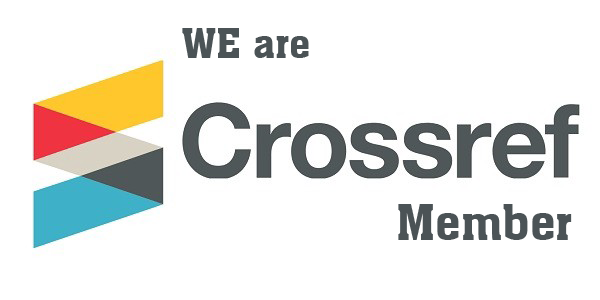Estimating Crop water Requirements of certain crops using modified Penman Method and Penman Montiath - FAO 98 in Benghazi plane region
DOI:
https://doi.org/10.54172/mjsc.v32i2.187Keywords:
Benghzi plan project, Crop water requirements, Modified Penman equation, Penman Monteith equationAbstract
Estimate of the crop water requirements depends mainly on, reference evapotranspiration (ETo) estimation, crop coefficient Kc, and type of irrigation system. Reference evapotranspiration represents the fundamental core of the estimation process of water requirements. Therefore one must pay attention to the selected method used in the calculation.This study is to compare the use of modified Penman method, which is theoretically sound and has gained acceptance as a standard method for estimating reference evapotranspiration, and FAO Penman-Monteith method which considered relatively accurate and consistent performance in both arid and humid climates. FAO Penman-Monteith method is recommended as the standard method for ETo prediction. Comparison of the estimated reference evapotranspiration by the two methods, modified Penman method gave higher estimates for ETo rage from 5.5 to 20.5%. But when comparing the results of crop water requirements in Benghazi plane region, the results got closer using the single crop coefficient technique for Penman- Monteith . Use of single crop coefficient technique based on long term metrological data, is suitable for planning and project design purposes. Use of dual crop coefficient, based on instantaneous data, is suitable for instantaneous irrigation scheduling frequent irrigations (not included in the scope of this study). Both methods gave very close results in the overall project water budgeting, crop water requirements and seasonal water storage requirements. This conclude that one may select either method, modified Penman or Penman-Monteith (single crop coefficient),to use for estimating crop water requirements for planning purpose. Both methods gave very close results for crop water requirements and project water demand estimates for Benghazi plane region project.
Downloads
References
اخنيفر، علي العقاب وميلاد الورشفاني وخليل سليمان وهندي السنوسي وعبد القادر الرابطي وعلي الخراز وناجي عاشور احمد. (1988). الاحتياجات المائية للمحاصيل لمنطقة بنغازي, التقرير الثاني لفريق الري و الصرف, دراسة مقدمة لجهاز تنفيذ وادارة مشروع النهر الصناعي.
اخنيفر، علي العقاب وميلاد الورشفاني وخليل سليمان وهندي السنوسي وعبد القادر الرابطي وعلي الخراز وناجي عاشور احمد.(1988). الموازنة المائية والتخزين لمنطقة جنوب غرب بنغازي, التقرير الخامس لفريق الري والصرف, دراسة مقدمة لجهاز تنفيذ وادارة مشروع النهر الصناعي.
Alkaeed, O. A., Jinno, K., and Tsutsumi, A. (2007). Estimation of evapotranspiration in Itoshima area Japan by the FAO56-PM method. Memoirs of the Faculty of Engineering, kyushu University 67(2):53-65.
Allen, R. G., Pereira, L. S., Raes, D., and Smith, M. (1998). Crop evapotranspiration-Guidelines for computing crop water requirements-FAO Irrigation and drainage paper 56. FAO, Rome 300(9):D05109.
Doorenbos, J. (1977). Guidelines for predicting crop water requirements. FAO, Roma (Italia).
Kamble, B., and Irmak, A. (2011). Remotely Sensed Evapotranspiration Data Assimilation for Crop Growth Modeling. Evapotranspiration. InTech. DOI: https://doi.org/10.5772/13990
Muya, E. M., Owenga, P., and Goro, H. (2016). Determination of crop water requirements in relation to available and domestic water supply demands in Nguruman Irrigation Scheme, Kajiado County, Kenya. Egerton Journal of Science & Technology 15.
Nova, V., Nilson, A., Miranda, J. H. d., Pereira, A. B., and Silva, K. O. d. (2006). Estimation of the potential evapotranspiration by a simplified penman method. Engenharia Agrícola 26(3):713-721. DOI: https://doi.org/10.1590/S0100-69162006000300007
Ross, E., and Hardy, L. (1997). National Engineering Hand Book, Part 652 Irrigation Guide. National Resource Conservation Service, National Cartography and Geospatial Center, Fort Worth, Texas, US.
Savva, A. P., and Frenken, K. (2002). Crop water requirements and irrigation scheduling. FAO Sub-Regional Office for East and Southern Africa Harare.
Sharma, B. R., and Smakhtin V. U. (2006). Potential of water harvesting as a strategic tool for drought mitigation. International Water Management Institute (IWMI).
Downloads
Published
How to Cite
License

This work is licensed under a Creative Commons Attribution-NonCommercial 4.0 International License.
Copyright of the articles Published by Almukhtar Journal of Science (MJSc) is retained by the author(s), who grant MJSc a license to publish the article. Authors also grant any third party the right to use the article freely as long as its integrity is maintained and its original authors and cite MJSc as original publisher. Also they accept the article remains published by MJSc website (except in occasion of a retraction of the article).













